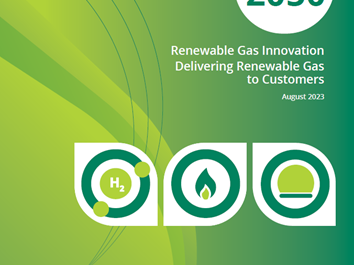WA aims for fairer prices for distributed resources
The Western Australian Government has released its plan to revolutionise the energy system for the future – the Distributed Energy Resources Roadmap.
The Roadmap envisages a future where Distributed Energy Resources (DER) are integral to a safe, reliable and efficient electricity system where the full capabilities of DER can provide value to all customers.
The Roadmap covers all aspects of DER including solar PV (solar), batteries, electric vehicles, smart appliances, tariffs, customer participation, markets and more.
DER is revolutionising the energy system
With 1.15 million customers, the South West Interconnected System (SWIS) is Australia’s second-largest interconnected electricity network. Operated by Western Power, more than 50 per cent of the overhead distribution network serves just three per cent of its customers. These distributed customer bases could be well served by orchestrated DER.
The roadmap plans to allows the growth of DER in the SWIS to the benefit of customers while maintaining a safe and secure energy system. A whole-of-system plan is set for release in mid-2020, identifying the best investments in the power system to maintain security and reliability at the lowest cost. Supporting regulatory frameworks due for completion in 2022 will redesign the Wholesale Electricity Market (WEM) to better enable DER technologies through a new market for energy services.[i]
The roadmap maintains that customers who want to connect their DER in the future should be able to do so, as all customers have the same right of access to connect DER. Increasing amounts of DER must be managed appropriately to make sure that customer investments in these products and services are delivering value.
Customers in the SWIS have invested more than a billion dollars in solar over the past decade, with CSIRO and AEMO anticipating 50 per cent of Western Australian households will have rooftop solar in the next ten years, up from the current one in three.[ii]
Reflecting the value of DER
At the heart of managing DER is appropriate pricing and investment signals that reflect the value that DER provides to the energy system.
Customers in the SWIS currently receive a flat feed-in-tariff from their retailer for their unused solar electricity exported back into the network which is unrelated to the value of their exported electricity.
This signals to customers that solar electricity exported in the middle of the day is equally as valuable as electricity exported during peak demand, which is clearly not the case as more electricity is required during peak demand periods.
AEMO is forecasting that peak demand will increase over time while solar’s contribution during the day will be more pronounced[iii]. Current network and retail tariff structures appear to be incompatible with a high-DER energy system.
Figure 1: AEMO analysis on the shape of the load curve on the minimum demand day[iv]
Although solar is actively reducing electricity bills for some customers, each customer who installs solar shifts some of their share of network costs on to other customers. Solar customers who consume their own locally generated electricity use less electricity from the network and pay a lower network charge as a result. However, the same network capacity is needed to supply solar customers during peak demand periods when solar output is low.
Tariff pilots to show the way
The roadmap details high priority tariff pilots that aim to deliver price signals that incentivise whole-of-system efficient electricity usage, resulting in the lowest cost for all customers.
Customers would be encouraged to move energy usage to the middle of the day to take advantage of excess solar generation and would be charged their fair share of network usage. Other DER technologies which provide greater system benefits, such as battery storage, would be more strongly incentivised.
At a network level, this is similar to a proposal from South Australian Power Networks, with midday becoming the new off-peak time for electricity.
A program to explore tariff structures that encourage more efficient usage of, and investment in, DER is well underway. Notably, the program should outline measures to assist and protect vulnerable customers who historically have been less able to change their energy usage habits. Implementation of tariff pilots is expected to begin in July 2020 with a review of progress and insights commencing later in the year.
Take-aways
Western Australia is charging ahead with plans to redevelop the SWIS into a two-way energy system complete with appropriate DER incentive frameworks designed to deliver whole-of-system value to customers.
Pricing which delivers the right incentives for usage and investment is an essential part of the DER solution to deliver optimal outcomes for customers, including the ability to be rewarded for the assistance they provide to the energy system.
References
[i] Energy Transformation Taskforce, Distributed Energy Roadmap (2019) p. 36
[ii] Energy Transformation Taskforce, Distributed Energy Roadmap (2019) p. 20-21.
[iii] AEMO, Integrating Utility-Scale Renewables and Distributed Energy Resources in the SWIS. p. 28, available at https://www.aemo.com.au/-/media/Files/Electricity/WEM/Security_and_Reliability/2019/Integrating-Utility-scale-Renewables-and-DER-in-theSWIS.pdf.
[iv] AEMO, Integrating Utility-Scale Renewables and Distributed Energy Resources in the SWIS. p. 28, available at https://www.aemo.com.au/-/media/Files/Electricity/WEM/Security_and_Reliability/2019/Integrating-Utility-scale-Renewables-and-DER-in-theSWIS.pdf.

